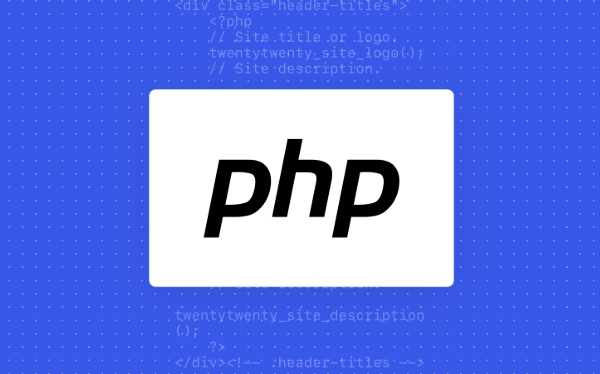The header('Location: ...') with PHP failed to jump with parameters or lost parameters. The common reasons and solutions are as follows: 1. The URL encoding is incorrect. http_build_query() should be used to automatically handle parameter encoding to avoid manual splicing causing special characters to destroy the URL structure; 2. There is output content before header(), and it is necessary to ensure that there is no output (including spaces, BOM headers, echo, etc.) before calling header(). You can use ob_start() to enable output buffering to temporarily solve it; 3. The browser cache or plug-in interferes with the jump behavior. It is recommended to clear the cache, use incognito mode to test, or add random parameters to the URL to force refresh. Just pay attention to the above three points to effectively solve most jump problems.

When using PHP's header('Location: ...') redirection, if the GET parameter is brought but it cannot jump normally or the parameters are lost, this problem is actually quite common. Usually it is not caused by the grammatical error, but by the improper details.

The URL encoding is incorrect
The most common problem is that the parameters are not coded correctly. If you manually splice the URL but contain special characters (such as spaces, Chinese, &, etc.), it will destroy the URL structure and cause the server to parse it.
?Solution:

- Use
http_build_query()to build a query string, which will automatically handle the encoding for you.
$params = ['name' => 'John Doe', 'city' => 'New York']; $url = 'target.php?' . http_build_query($params); header('Location: ' . $url); exit;
The URL generated in this way is:
target.php?name=John Doe&city=New York
There will be no garbled or cut-off.

header() has output before
header() function of PHP must be called before any actual content is output, otherwise an error will be reported: "Cannot modify header information - headers already sent".
??Common reasons:
- There is
echo,printorvar_dumpin front of it - There are blank characters or BOM headers before the beginning of the file
- Contains other files, and that file has output
? Troubleshooting suggestions:
- Check if there are spaces before
<?phpor line breaks - Don't have any output before calling
header() - Use
ob_start()to enable output buffering to temporarily avoid this problem
Browser cache or plug-in interference
Sometimes you obviously change the code but refresh the page but there is no change. It may be that the browser caches the jump behavior. Especially the 301 jump will be cached for a long time.
? Countermeasures:
- Try clearing the browser cache, or test it in incognito mode
- Use the developer tools to view the Network panel to confirm whether a new request has been executed
- If it is a test environment, you can use different URL parameters to force refresh (for example, add a random number)
header('Location: target.php?time=' . time());
Although not a long-term solution, it is very useful when debugging.
Summarize the prone to problems
- Not using
http_build_query()when splicing URLs results in error in parameter format - I accidentally outputted the content before
header() - Browser cache makes the jump look "not effective"
These issues are not complicated, but are easily overlooked. As long as you pay attention to the encoding and output order, most cases can be solved.
Basically that's it.
The above is the detailed content of PHP header location with GET parameters not working. For more information, please follow other related articles on the PHP Chinese website!

Hot AI Tools

Undress AI Tool
Undress images for free

Undresser.AI Undress
AI-powered app for creating realistic nude photos

AI Clothes Remover
Online AI tool for removing clothes from photos.

Clothoff.io
AI clothes remover

Video Face Swap
Swap faces in any video effortlessly with our completely free AI face swap tool!

Hot Article

Hot Tools

Notepad++7.3.1
Easy-to-use and free code editor

SublimeText3 Chinese version
Chinese version, very easy to use

Zend Studio 13.0.1
Powerful PHP integrated development environment

Dreamweaver CS6
Visual web development tools

SublimeText3 Mac version
God-level code editing software (SublimeText3)

Hot Topics
 How do I implement authentication and authorization in PHP?
Jun 20, 2025 am 01:03 AM
How do I implement authentication and authorization in PHP?
Jun 20, 2025 am 01:03 AM
TosecurelyhandleauthenticationandauthorizationinPHP,followthesesteps:1.Alwayshashpasswordswithpassword_hash()andverifyusingpassword_verify(),usepreparedstatementstopreventSQLinjection,andstoreuserdatain$_SESSIONafterlogin.2.Implementrole-basedaccessc
 How can you handle file uploads securely in PHP?
Jun 19, 2025 am 01:05 AM
How can you handle file uploads securely in PHP?
Jun 19, 2025 am 01:05 AM
To safely handle file uploads in PHP, the core is to verify file types, rename files, and restrict permissions. 1. Use finfo_file() to check the real MIME type, and only specific types such as image/jpeg are allowed; 2. Use uniqid() to generate random file names and store them in non-Web root directory; 3. Limit file size through php.ini and HTML forms, and set directory permissions to 0755; 4. Use ClamAV to scan malware to enhance security. These steps effectively prevent security vulnerabilities and ensure that the file upload process is safe and reliable.
 What are the differences between == (loose comparison) and === (strict comparison) in PHP?
Jun 19, 2025 am 01:07 AM
What are the differences between == (loose comparison) and === (strict comparison) in PHP?
Jun 19, 2025 am 01:07 AM
In PHP, the main difference between == and == is the strictness of type checking. ==Type conversion will be performed before comparison, for example, 5=="5" returns true, and ===Request that the value and type are the same before true will be returned, for example, 5==="5" returns false. In usage scenarios, === is more secure and should be used first, and == is only used when type conversion is required.
 How do I perform arithmetic operations in PHP ( , -, *, /, %)?
Jun 19, 2025 pm 05:13 PM
How do I perform arithmetic operations in PHP ( , -, *, /, %)?
Jun 19, 2025 pm 05:13 PM
The methods of using basic mathematical operations in PHP are as follows: 1. Addition signs support integers and floating-point numbers, and can also be used for variables. String numbers will be automatically converted but not recommended to dependencies; 2. Subtraction signs use - signs, variables are the same, and type conversion is also applicable; 3. Multiplication signs use * signs, which are suitable for numbers and similar strings; 4. Division uses / signs, which need to avoid dividing by zero, and note that the result may be floating-point numbers; 5. Taking the modulus signs can be used to judge odd and even numbers, and when processing negative numbers, the remainder signs are consistent with the dividend. The key to using these operators correctly is to ensure that the data types are clear and the boundary situation is handled well.
 How can you interact with NoSQL databases (e.g., MongoDB, Redis) from PHP?
Jun 19, 2025 am 01:07 AM
How can you interact with NoSQL databases (e.g., MongoDB, Redis) from PHP?
Jun 19, 2025 am 01:07 AM
Yes, PHP can interact with NoSQL databases like MongoDB and Redis through specific extensions or libraries. First, use the MongoDBPHP driver (installed through PECL or Composer) to create client instances and operate databases and collections, supporting insertion, query, aggregation and other operations; second, use the Predis library or phpredis extension to connect to Redis, perform key-value settings and acquisitions, and recommend phpredis for high-performance scenarios, while Predis is convenient for rapid deployment; both are suitable for production environments and are well-documented.
 How do I stay up-to-date with the latest PHP developments and best practices?
Jun 23, 2025 am 12:56 AM
How do I stay up-to-date with the latest PHP developments and best practices?
Jun 23, 2025 am 12:56 AM
TostaycurrentwithPHPdevelopmentsandbestpractices,followkeynewssourceslikePHP.netandPHPWeekly,engagewithcommunitiesonforumsandconferences,keeptoolingupdatedandgraduallyadoptnewfeatures,andreadorcontributetoopensourceprojects.First,followreliablesource
 What is PHP, and why is it used for web development?
Jun 23, 2025 am 12:55 AM
What is PHP, and why is it used for web development?
Jun 23, 2025 am 12:55 AM
PHPbecamepopularforwebdevelopmentduetoitseaseoflearning,seamlessintegrationwithHTML,widespreadhostingsupport,andalargeecosystemincludingframeworkslikeLaravelandCMSplatformslikeWordPress.Itexcelsinhandlingformsubmissions,managingusersessions,interacti
 How to set PHP time zone?
Jun 25, 2025 am 01:00 AM
How to set PHP time zone?
Jun 25, 2025 am 01:00 AM
TosettherighttimezoneinPHP,usedate_default_timezone_set()functionatthestartofyourscriptwithavalididentifiersuchas'America/New_York'.1.Usedate_default_timezone_set()beforeanydate/timefunctions.2.Alternatively,configurethephp.inifilebysettingdate.timez






